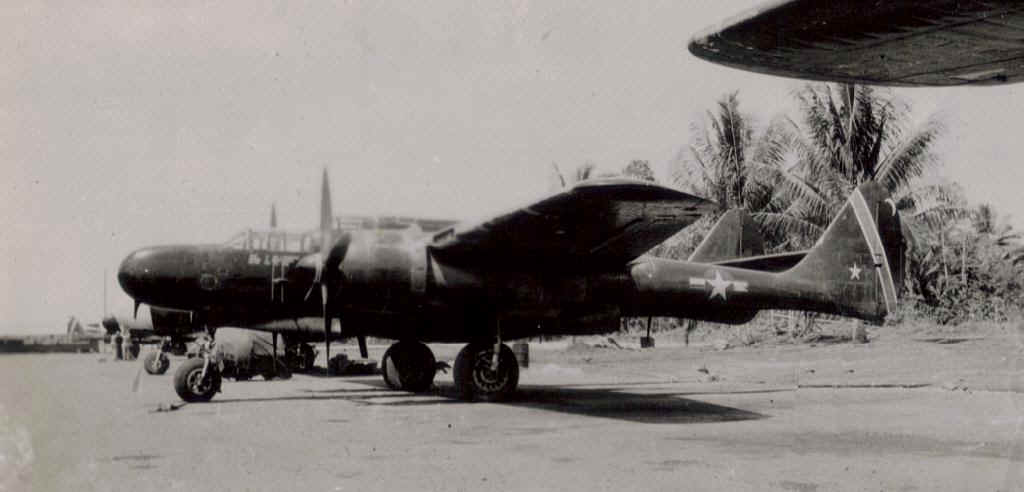
Image du Jours -- World War II
About this P-61 - WWII #4 of 23.

(Image from Heckman-Cashion Collection)
Night-Time Surprise
This is another photo from the Heckman Collection and lets see what we can quickly learn from this photo.
First off, it looks the same as several others and it lends itself more to an island airstrip than one in Australia. (Yes, I know that Australia is an island, too -- but it is one of different geological origin.)
There are at least four Northrop P-61 Blackwidows in a row and the tails would provide for ready-identity of the group and squadron and from that, much more. I know that this is a group insignia rather than a pilot's affectation because the last P-61 in the row is pointing the other direction and its tail shows the same slanting stripe across fin and rudder. And I see that this was placed on both sides of just the outside surfaces.
I can see that the principal P-61 has tail numbers but in the desire to keep night detection down, the numbers are impossible to read.
They did manage to find enough bright paint to put the crew's names and rank by the canopy, however. With a little enhancement, these names might be determined. There was a crew of three.
Ugly-looking brutes, aren't they?
And I bet they really lit up the night sky when they fired. It was quite a surprise no doubt to some guy who thought he was all alone in the dark sky.
The Blackwidow had 4, 50-caliber machine guns AND 4, 20-mm canons. Getting hit with just one, 1-second burst from those and the opposing pilot would be flying along with just his seat -- his aircraft would be in shreds.
Northrop, who was not one of the big players in WWII aviation design -- more for political reasons than technical -- submitted the design for this aircraft to the USAAF in November 1940. At nearly the same time, the British notified the US that there was going to be a need for radar-equipped fighters. The USAAF saw that the Northrop design, with two 2,000 hp engines would be strong enough to carry the heavy radar of that time and large enough to carry plenty of armament, as well.
The idea reached fruition when in early January, 1941, 2 prototypes were ordered, the first of which flew in May 1942; in March of 1941, 13 pre-series models had been ordered and they were in flight tests a few months after the prototype flew; in September of 1941, 150 production models were ordered and in February of 1942, another 450 aircraft were ordered.
This was some rapid decision-making but there was an urgent reality of the growing war situation. There were delays in the later flight test models because MIT had to "Americanize and miniaturize" the British radar system.
The first 200 production models, the P-61A, were delivered in late 1943 and went into service in 1944.
(We know that the photographer, Heckman, was in Morotai and New Guinea-proper from mid-1943 until near the end of the war in 1945.)
The following 450 production models were the P-61B's with underwing pylons for bombs or fuel tanks -- which I cannot see in the photo -- I cannot say that they aren't there, I just can't see them.
The last of the Blackwidows were P-61Cs had a total of 5,600 hp driving larger props, and cruising at over 300 mph. Its attack speed of 430 mph caused it to start over-running its targets. So, this big fighter had air-brakes installed over and under each wing!
Its service ceiling was 41,000' and had a range of over 1,700 miles, and it served in all theatres of war. The big plane was not light on the controls but behaved like a fighter with a climb of 2,600' per minute.
Here we have an interesting WWII photo with the potential for even more research if someone was so inclined.
Ken Cashion